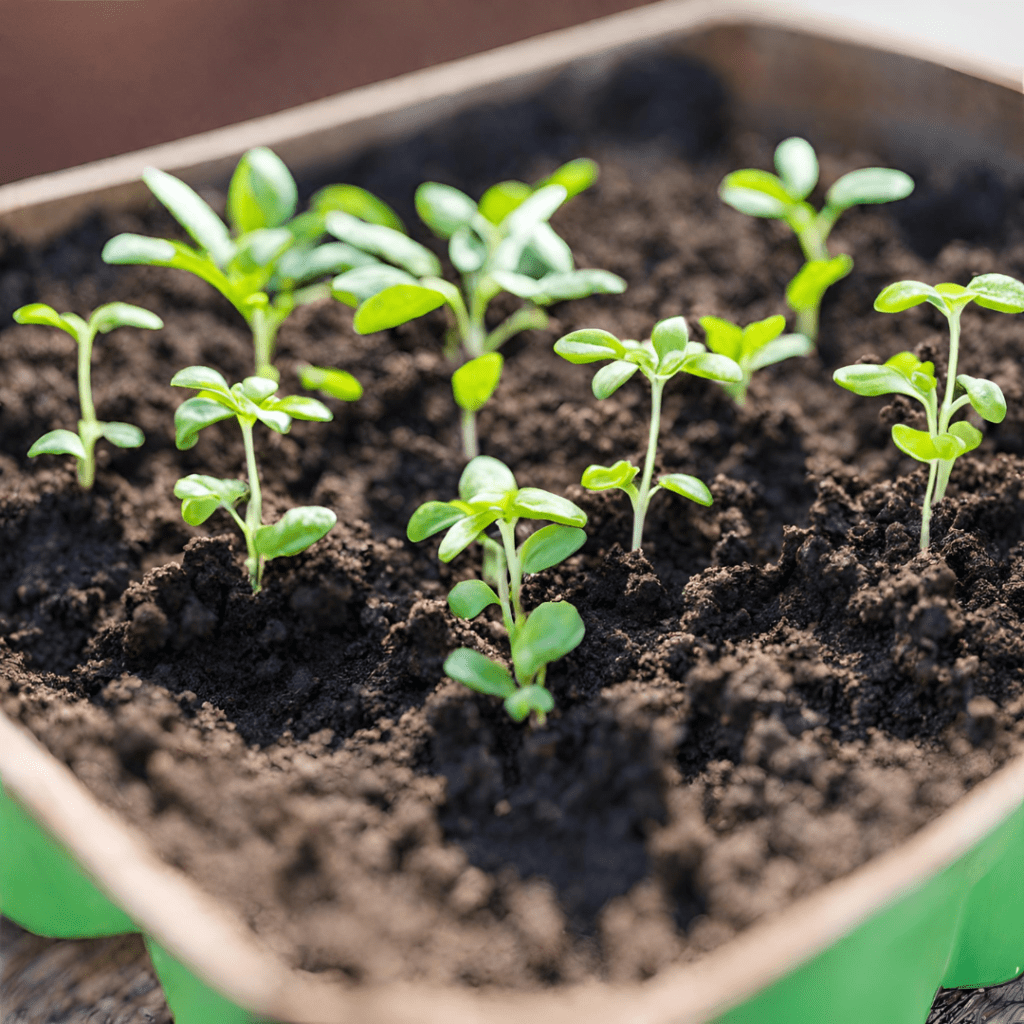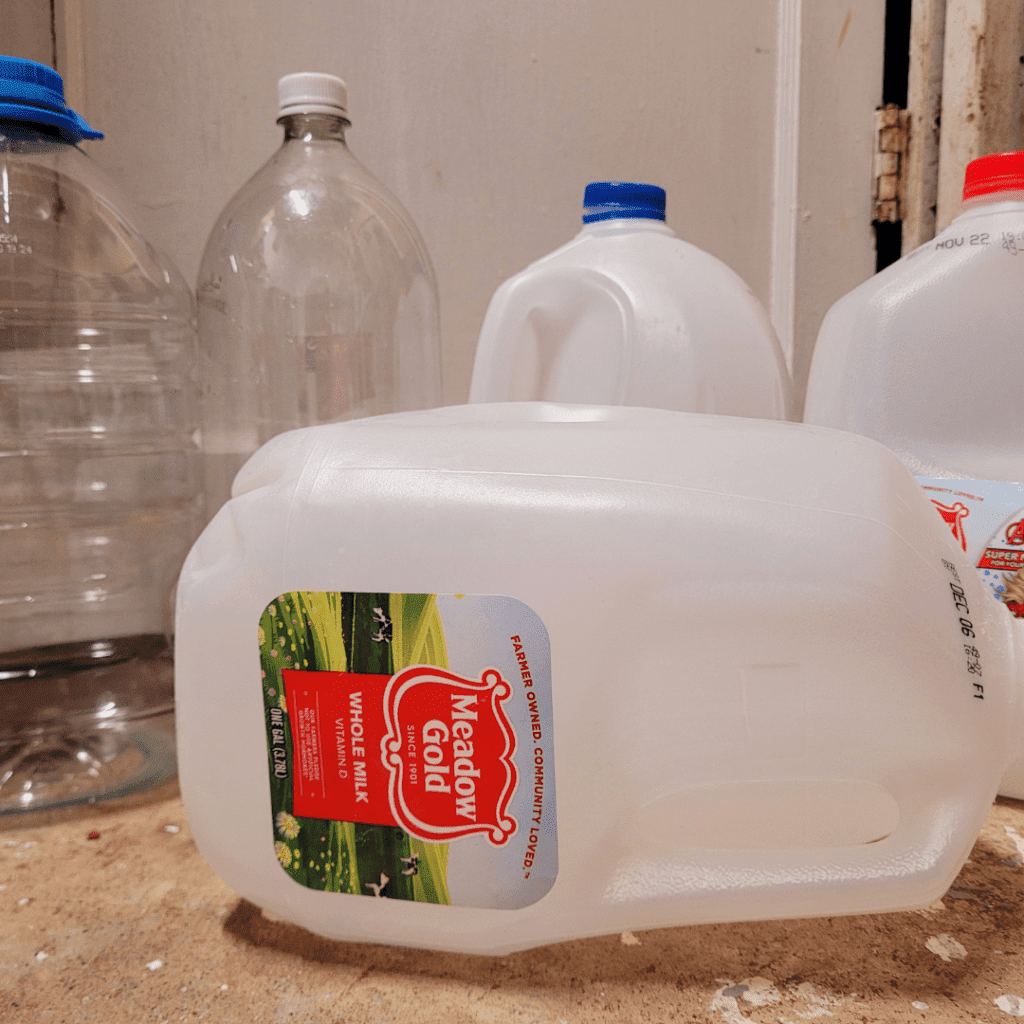Learn how to prevent mold and mildew in winter-sown containers and keep your seedlings healthy. Discover effective tips for proper drainage, air circulation, and soil management to stop fungal growth, ensuring strong, resilient plants that thrive in cold-weather conditions. Say goodbye to damp, moldy soil and enjoy a successful winter sowing season.
Mold and mildew are persistent issues that gardeners often encounter when growing plants in winter-sown containers. As the cold weather sets in, the combination of low temperatures, increased moisture, and reduced air circulation creates the perfect breeding ground for these unwanted fungi. Not only do mold and mildew detract from the aesthetic appeal of your containers, but they can also harm the health of your plants.
In this article, I will delve into the causes and risk factors associated with mold and mildew growth in winter-sown containers. Furthermore, I will explore effective prevention and preparation strategies, container selection and maintenance tips, as well as proper soil, plant, watering, and environmental management practices to combat and eradicate mold and mildew issues. With the right knowledge and proactive measures, you can keep your winter-sown containers thriving and free from the grasp of mold and mildew.
This is a pinnable post. Tap or hover over any image in this post to pin to your Pinterest Boards.
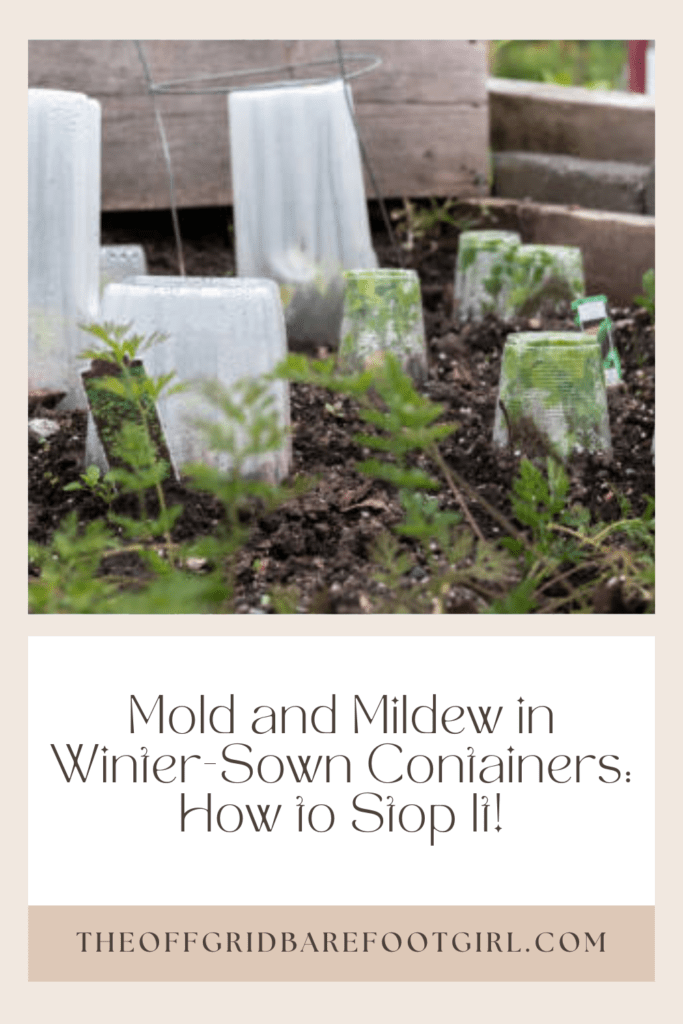
Introduction: Understanding the Problem of Mold and Mildew in Winter-Sown Containers
Winter may bring a sense of coziness and hot chocolate, but it can also bring a pesky problem for gardeners – mold and mildew in winter-sown containers. These unwanted guests have a knack for thriving in moist, stagnant conditions, wreaking havoc on our precious plants. But fear not! In this article, I’ll delve into the causes and risk factors behind mold and mildew growth, as well as provide you with practical tips to prevent and combat this gardener’s nightmare.
Causes and Risk Factors: Identifying the Factors that Contribute to Mold and Mildew Growth
Excessive Moisture: The Primary Culprit Behind Mold and Mildew
Mold and mildew in winter-sown containers are like the party crashers of the gardening world – they thrive on excessive moisture. When containers are consistently saturated, whether due to overwatering or poor drainage, it creates the perfect breeding ground for these unwelcome fungi. So, if you’ve been guilty of drowning your plants in love, it’s time to reassess your watering habits.
Lack of Air Circulation: Creating an Environment Conducive to Mold and Mildew
Just like humans, plants need fresh air to thrive. Unfortunately, when we winter-sow our containers indoors, the lack of air circulation becomes an open invitation for mold and mildew to colonize. Stagnant air creates optimal conditions for these fungi to multiply, leading to unsightly and potentially damaging effects on your plants. It’s time to give your green buddies a breath of fresh air!
Poor Drainage: Accumulation of Water in Containers
Imagine trying to live in a house with a leaky roof – not ideal, right? Well, that’s exactly how plants in containers with poor drainage feel. When water accumulates at the bottom of containers, it becomes a breeding ground for mold and mildew. So, if your containers lack drainage holes or have blocked them with soil, it’s time to liberate your plants from the waterlogged mess.
Prevention and Preparation: Steps to Take Before Planting to Minimize Mold and Mildew
Sterilizing Containers: Eliminating Existing Mold and Mildew Spores
Before you embark on your winter-sowing journey, it’s essential to sterilize your containers to get rid of any lingering mold and mildew spores. Give them a good scrub with a mild bleach solution, rinse thoroughly, and let them dry completely. This simple step can go a long way in preventing future infestations.
Using Clean Soil and Potting Mixes: Reducing the Likelihood of Contamination
Don’t let contaminated soil cramp your gardening style. To reduce the risk of mold and mildew, opt for clean soil and potting mixes specifically formulated for containers. These mixes are less likely to carry mold spores and provide a healthy foundation for your plants to flourish. Use fresh potting soil each year and never reuse old potting soil in containers. It is better to dump them in the garden when you transplant the plants in their permanent spots.
Choosing Suitable Plant Varieties: Resistant to Mold and Mildew
Prevention is better than cure, even in the gardening world. By choosing plant varieties that are naturally resistant to mold and mildew, you can significantly reduce the likelihood of an outbreak. Research plants known for their resilience to these fungi, and both you and your future plant babies will be grateful.
Container Selection and Maintenance: Choosing the Right Containers and Keeping Them Clean
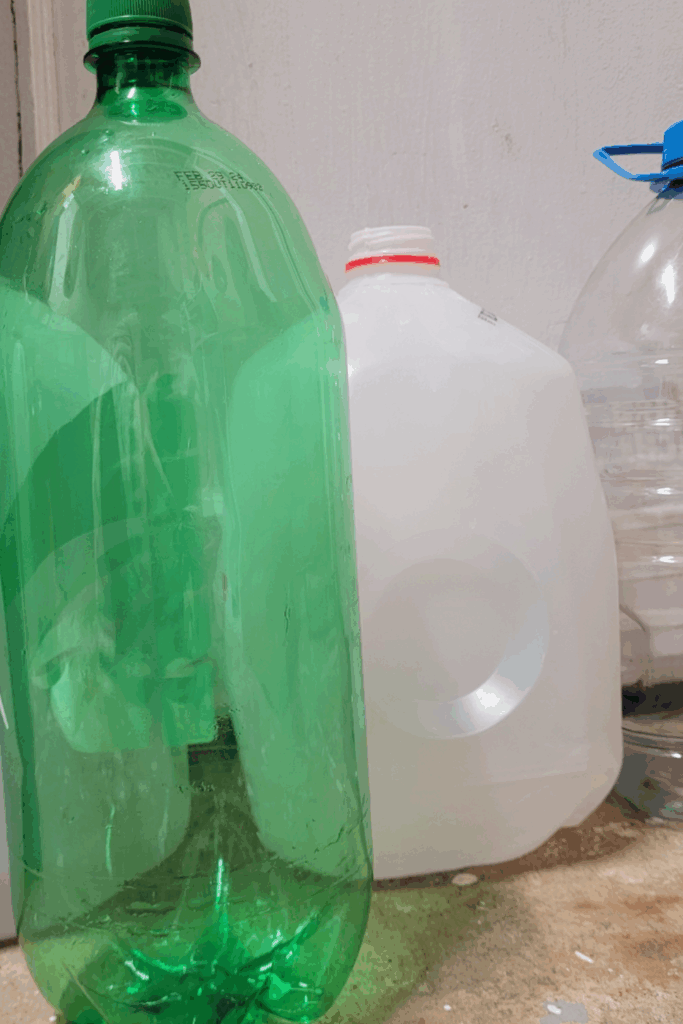
Selecting Containers with Proper Drainage Holes
When it comes to container selection, prioritize those with proper drainage holes. These little openings provide an escape route for excess water, preventing it from accumulating and becoming a playground for mold and mildew.
Regular Cleaning and Sanitization of Containers
Just like dirty dishes in the sink, neglecting to clean your containers can lead to unwanted consequences. Take the time to regularly clean and sanitize your containers, especially between planting seasons. A simple wash with warm, soapy water followed by a rinse can help keep mold and mildew at bay, ensuring a clean, healthy environment for your plants.
Soil and Plant Selection: Using Appropriate Soil Mixes and Resistant Plant Varieties
Using Well-Draining Soil Mixes
When it comes to preventing mold and mildew in winter-sown containers, choosing the right soil mix can make all the difference. Opt for a well-draining soil mix that allows excess moisture to escape easily. This will help prevent water from getting trapped in the container, creating the perfect breeding ground for mold.
Incorporating Organic Matter to Improve Soil Structure
Adding organic matter to your soil mix can greatly improve its structure and drainage capabilities. This can be achieved by incorporating compost, well-rotted manure, or other organic materials into the soil. Not only does this help prevent waterlogging, but it also provides essential nutrients to your plants.
Choosing Mold and Mildew-Resistant Plant Varieties
Another way to combat mold and mildew is by selecting plant varieties that are naturally resistant to these fungi. Do a bit of research to find out which plants have built-in defense mechanisms against mold and mildew. By choosing resistant varieties, you’ll be one step ahead in keeping your winter-sown containers healthy and mold-free.
Watering Practices: Proper Watering Techniques to Prevent Excessive Moisture and Mold Growth
Watering Based on Plant Needs
One of the biggest culprits of mold and mildew growth is overwatering. Instead of following a strict watering schedule, it’s important to water your plants based on their specific needs. Before reaching for that watering can, check the moisture level of the soil using your fingers. If it feels dry up to the first knuckle, it’s time to water.
Using Bottom-Watering Methods
To further prevent excessive moisture and potential mold growth, consider using bottom-watering methods. This involves placing your containers in a tray or saucer filled with water and allowing the plants to soak up the moisture from the bottom. This way, the plants will take in only what they need, and the top layer of soil will remain drier, discouraging mold growth.
Avoiding Overwatering and Waterlogged Soil
Overwatering can quickly lead to waterlogged soil, which creates an environment where mold thrives. To avoid this, make sure to allow the top layer of soil to dry out before watering again. Additionally, ensure that your containers have proper drainage holes to allow excess water to escape.
Air Circulation and Light Exposure: Maximizing Airflow and Sunlight to Inhibit Mold and Mildew
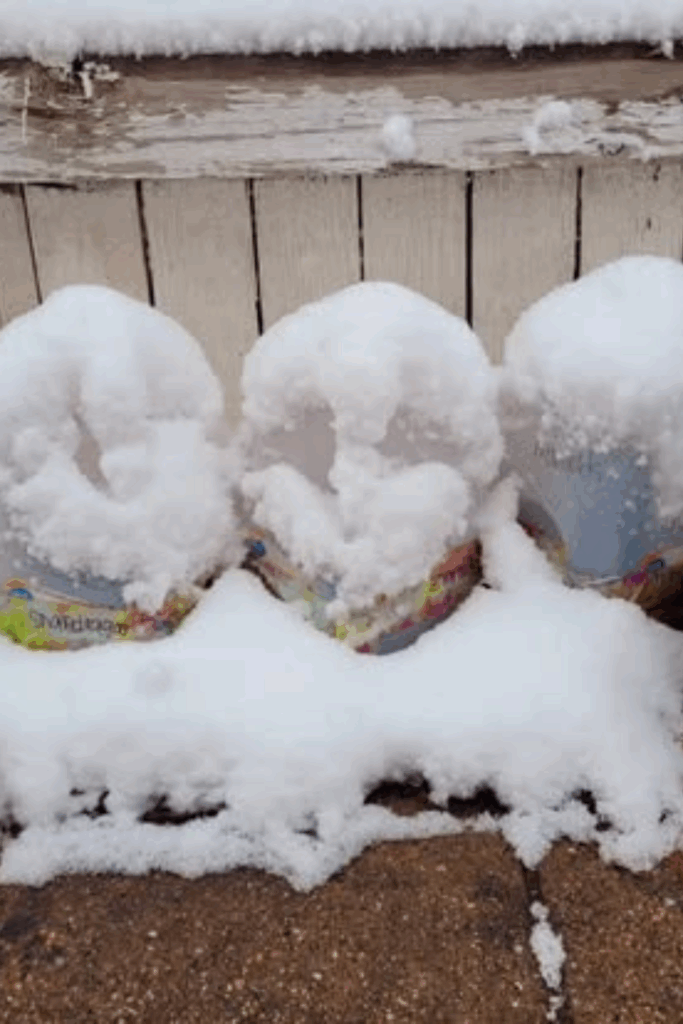
Positioning Containers to Receive Adequate Sunlight
Placing your winter-sown containers in a location that receives ample sunlight is crucial for mold prevention. Sunlight helps dry out the soil and foliage, making it less hospitable for mold and mildew. Aim for at least six hours of direct sunlight each day, and if necessary, use reflective surfaces to redirect light to shaded spots.
Pruning and Thinning Foliage
To promote better airflow around your plants, it’s important to regularly prune and thin out the foliage. Dense and overcrowded plants create pockets of dampness, which are perfect breeding grounds for mold and mildew. By trimming back excess foliage, you’ll improve air circulation and reduce the chances of mold taking hold.
By following these tips and incorporating them into your winter container gardening routine, you can say goodbye to mold and mildew woes and hello to healthy and thriving plants. Remember, prevention is key, so invest some time and effort in creating the ideal conditions for your plants to thrive.
Conclusion
In conclusion, by understanding the causes and risk factors of mold and mildew growth in winter-sown containers and implementing the appropriate prevention and maintenance techniques, you can effectively combat this common problem. Remember to choose the right containers, maintain proper soil and plant selection, practice correct watering methods, and ensure adequate air circulation and light exposure. By taking these proactive steps, you can enjoy healthy and vibrant plants in your winter-sown containers, free from the troubles of mold and mildew. Don’t let these fungi dampen your gardening experience – take charge and create an environment that promotes optimal growth and beauty all year round.
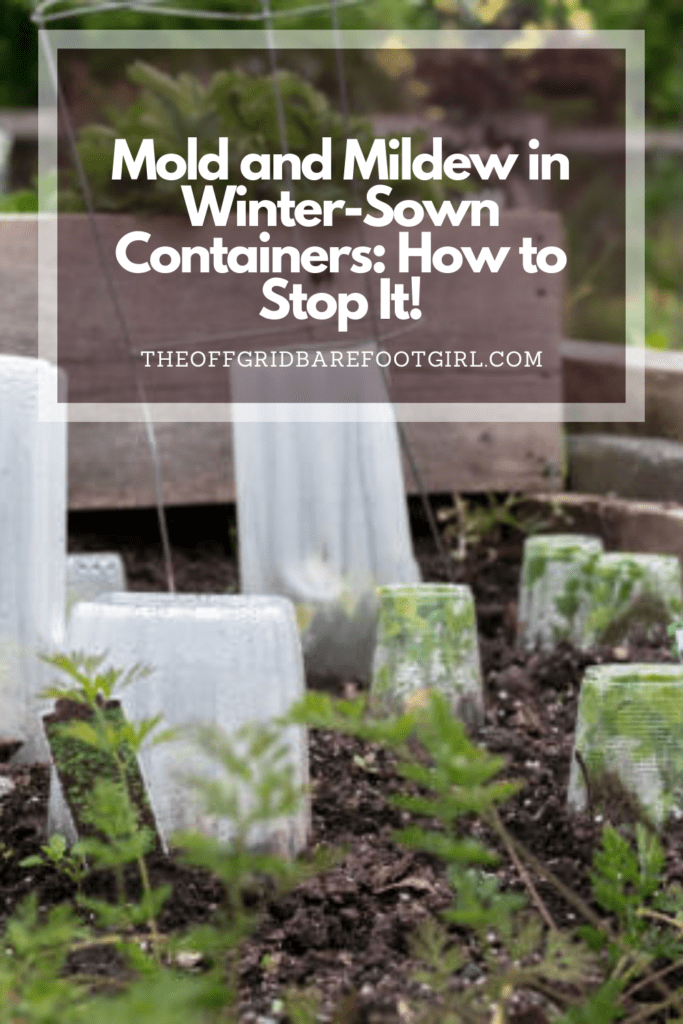
Frequently Asked Questions
1. Can I still use winter-sown containers if I’ve had mold and mildew issues in the past?
Yes, you can still use winter-sown containers even if you’ve had mold and mildew issues before. By implementing proper prevention and maintenance techniques, you can significantly reduce the likelihood of mold and mildew growth. This includes choosing suitable containers with proper drainage, using clean soil and potting mixes, selecting resistant plant varieties, practicing correct watering methods, and ensuring adequate air circulation and light exposure.
2. How often should I water my plants in winter-sown containers to prevent mold and mildew?
The frequency of watering depends on various factors such as plant type, container size, and environmental conditions. It’s crucial to water your plants based on their individual needs and avoid overwatering, as excessive moisture can contribute to mold and mildew growth. Monitor the moisture levels in the soil by checking the top inch of soil with your finger – if it feels dry, it’s time to water. Additionally, consider using bottom-watering methods to prevent waterlogged soil and promote healthier root growth.
3. What are some natural remedies for treating mold and mildew in winter-sown containers?
There are several natural remedies you can try to treat mold and mildew in winter-sown containers. One option is to create a mixture of one part vinegar to three parts water and spray it onto the affected areas. Another natural remedy is to use a solution of hydrogen peroxide and water in a 1:9 ratio. Additionally, improving air circulation by placing a fan near the containers and exposing them to sunlight can help inhibit mold and mildew growth. However, prevention is key, so it’s essential to maintain proper container hygiene and implement preventative measures to minimize the chances of mold and mildew issues.
Summary
I hope I have inspired you to try your skills at winter sowing with these tips and products.
If you were encouraged by this post, I invite you to check out my FREE Printables Page for fun free printables, planners, and charts.
ENTER MY FREE Printables Page HERE
Here are some more of my winter gardening inspiration posts to check out!
Temperature Fluctuations and Winter Sowing: What You Need to Know
Top Common Problems and Solutions in Winter Sowing: Ultimate Guide
Winter Magic Unveiled: Boost Your Plants’ Growth With Perfect Timing
When to Start Planting Vegetables in Winter: The Ultimate Guide
Winter Sowing: How to Decide If It’s Right for Your Garden
How to Build Mini Greenhouses for Winter Sowing
How to Repurpose Everyday Items into Winter Sowing Containers
Root Vegetables That Thrive in Winter Sowing: Ultimate List
How to Grow Cold Hardy Greens for Winter Sowing
Top Winter-Sowing Vegetables for a Head Start in the Garden
Getting Started with Winter Sowing: The Ultimate Guide
The Benefits of Successful Winter Sowing for Vegetables in Containers
The Ultimate Guide to Choosing the Best Soil for Winter Sowing
Planning Your Garden: How to Plan a Vegetable Garden: Expert Green Thumb Tips!
Winterizing the Garden: How to Winterize Your Vegetable Garden: Step-by-Step Checklist
Mulching the Garden: How to Make Leaf Litter Mulch
How to Grow a Fall Garden: 9 Best Fall Crops
Blessings,
The Off Grid Barefoot Girl




